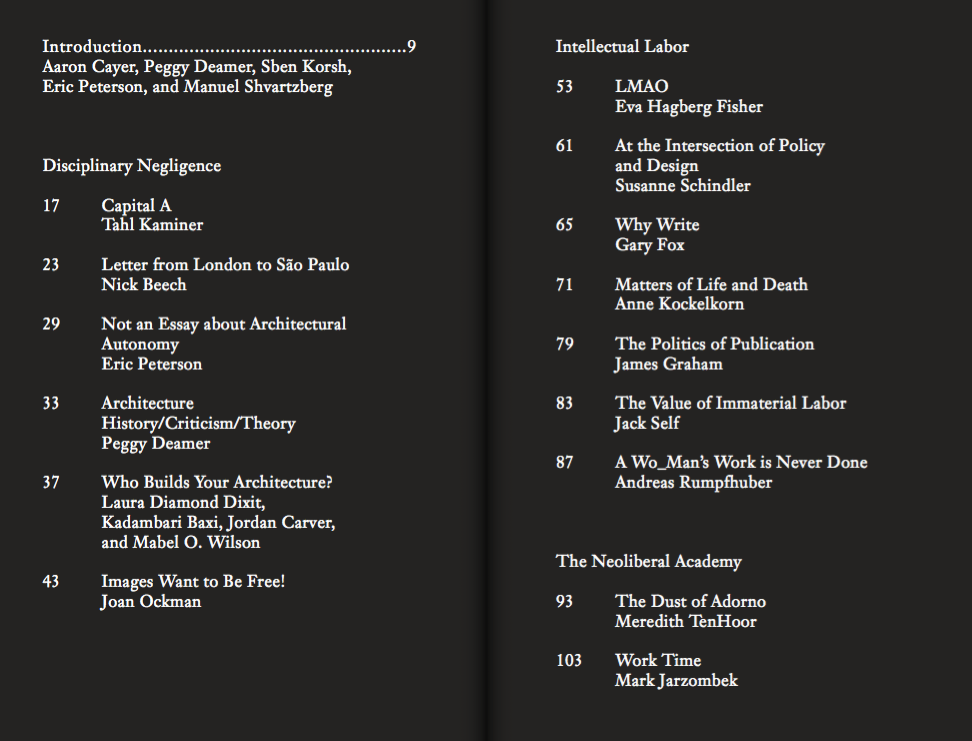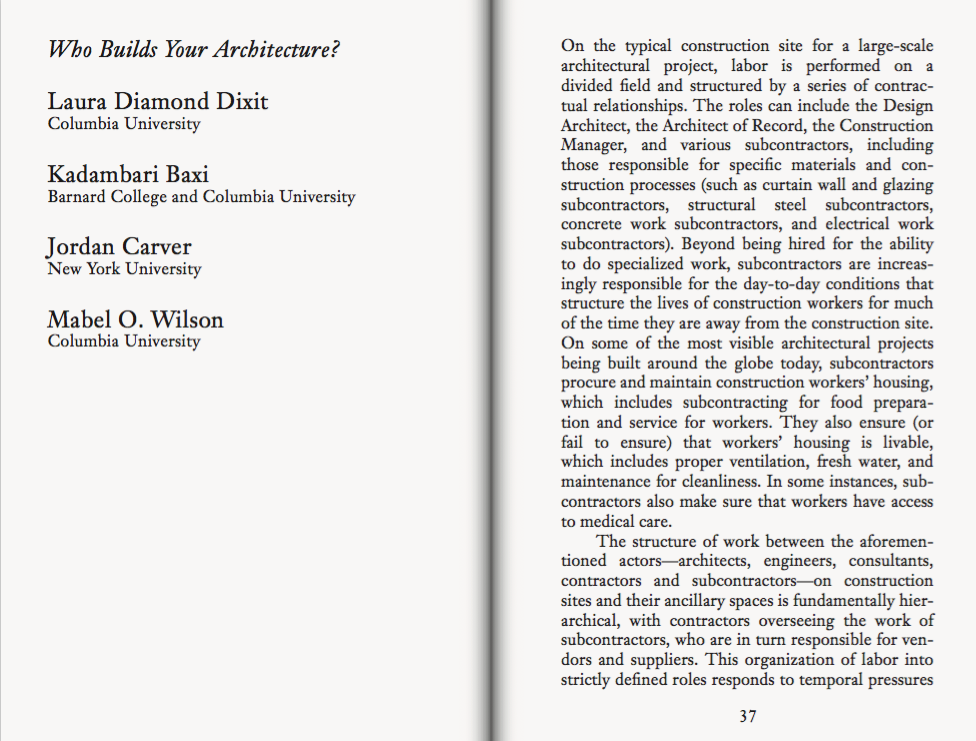Asymmetric Labors
|
“On the typical construction site for a large-scale architectural project, labor is performed on a divided field and structured by a series of contractual relationships. The roles can include the Design Architect, the Architect of Record, the Construction Manager, and various subcontractors, including those responsible for specific materials and construction processes (such as curtain wall and glazing subcontractors, structural steel subcontractors, concrete work subcontractors, and electrical work subcontractors). Beyond being hired for the ability to do specialized work, subcontractors are increasingly responsible for the day-to-day conditions that structure the lives of construction workers for much of the time they are away from the construction site. On some of the most visible architectural projects being built around the globe today, subcontractors procure and maintain construction workers’ housing, which includes subcontracting for food preparation and service for workers. They also ensure (or fail to ensure) that workers’ housing is livable, which includes proper ventilation, fresh water, and maintenance for cleanliness. In some instances, subcontractors also make sure that workers have access to medical care.” Laura Diamond Dixit, Kadambari Baxi, Jordan Carver, and Mabel O. Wilson. “Who Builds Your Architecture?” in Asymmetric Labors: The Economy of Architecture in Theory and Practice, edited by Aaron Cayer, Peggy Deamer, Sben Korsh, Eric Peterson, and Manuel Shvartzberg (New York: The Architecture Lobby, 2016). Link to the pdf of the booklet. |

